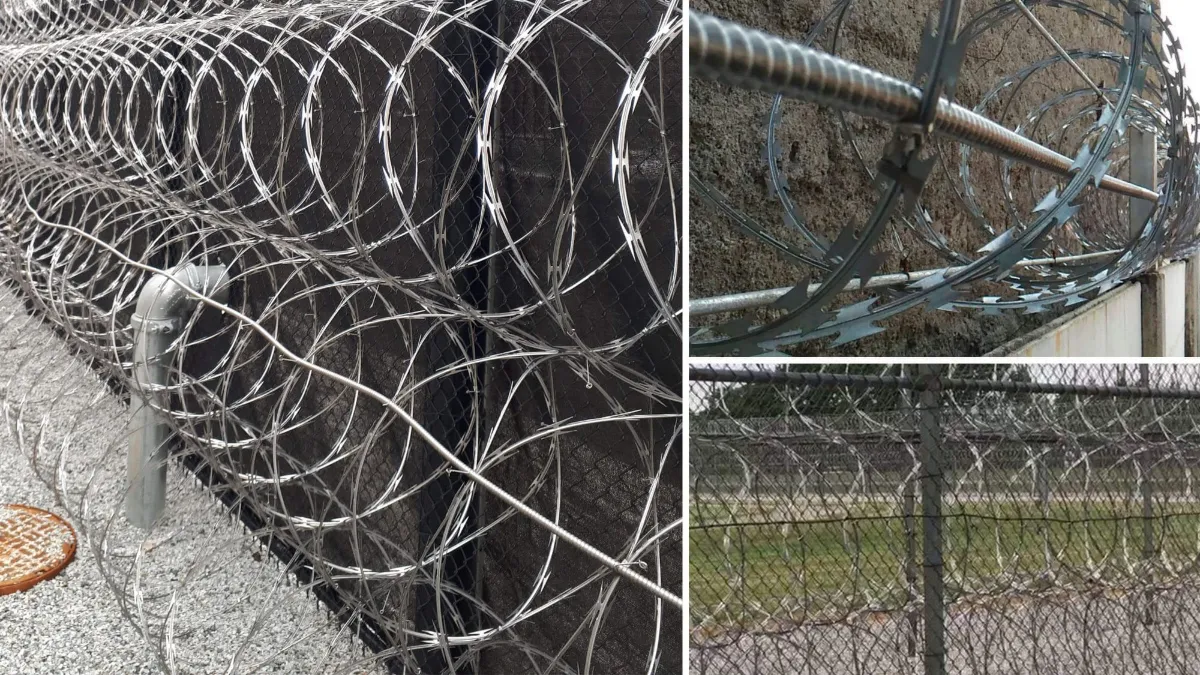
Advertisement
In the realm of border security, razor wire has become a ubiquitous feature, adorning fences and barriers along international boundaries. The menacing appearance of razor wire, with its sharp, pointed edges, raises questions about its necessity and effectiveness. To understand why razor wire is used in border settings, we must delve into the multifaceted reasons that drive its deployment and explore the impact it has on security measures.
1. Deterrence and Perimeter Defense
One of the primary purposes of razor wire in border security is deterrence. The presence of sharp-edged barriers sends a clear message to potential intruders, dissuading them from attempting to breach the border. The intimidating nature of razor wire serves as a visual deterrent, acting as a formidable obstacle that discourages illegal crossings.
In addition to deterrence, razor wire plays a crucial role in establishing a robust perimeter defense. By creating physical barriers that are challenging to overcome, razor wire helps border enforcement agencies maintain control over entry points. Its installation is often part of a comprehensive strategy to safeguard territorial integrity and maintain order along international borders.
2. Enhanced Border Control and Surveillance
Razor wire is often deployed in conjunction with other security measures, such as surveillance technologies and monitoring systems. When integrated into a comprehensive border control strategy, razor wire acts as a physical barrier that complements electronic surveillance. This combination enhances the ability of border enforcement agencies to detect and respond to unauthorized border crossings promptly.
The use of razor wire, especially when combined with advanced surveillance technologies, enables real-time monitoring of border areas. This proactive approach allows authorities to identify and address potential security threats before they escalate, contributing to a more effective and efficient border control system.
3. Symbolic Significance
Beyond its practical applications, razor wire carries symbolic significance in the context of border security. The visible presence of such barriers serves as a tangible representation of a nation’s commitment to protecting its borders. It reinforces the idea of sovereignty and underscores the importance placed on maintaining order and security within national boundaries.
The symbolic value of razor wire extends beyond mere physical deterrence; it communicates a message to both domestic and international audiences about a country’s stance on immigration and security. In some cases, the deployment of razor wire may be a response to specific geopolitical challenges, underlining a nation’s commitment to addressing border-related concerns.
4. Adaptability and Cost-Effectiveness
Razor wire is favored for its adaptability to different terrains and environments. Whether installed on fences, walls, or other structures, razor wire can be customized to suit the specific needs and challenges of a particular border region. Its versatility makes it a practical choice for border security measures, allowing authorities to implement effective deterrents in diverse geographical settings.
Moreover, razor wire is often considered a cost-effective solution for border security. When compared to other physical barriers or surveillance technologies, razor wire installations are relatively economical. This cost efficiency makes it an attractive option for nations seeking to fortify their borders without compromising on effectiveness.
While razor wire plays a crucial role in bolstering border security, its use is not without controversy. Critics argue that the harsh physical barriers can be perceived as inhumane, and concerns about their impact on vulnerable populations are raised. Striking a balance between effective border control and humanitarian considerations remains a complex challenge for nations grappling with the complexities of immigration and security. Ultimately, the use of razor wire underscores the ongoing dialogue about the intersection of security, sovereignty, and the fundamental principles of compassion and human rights.
